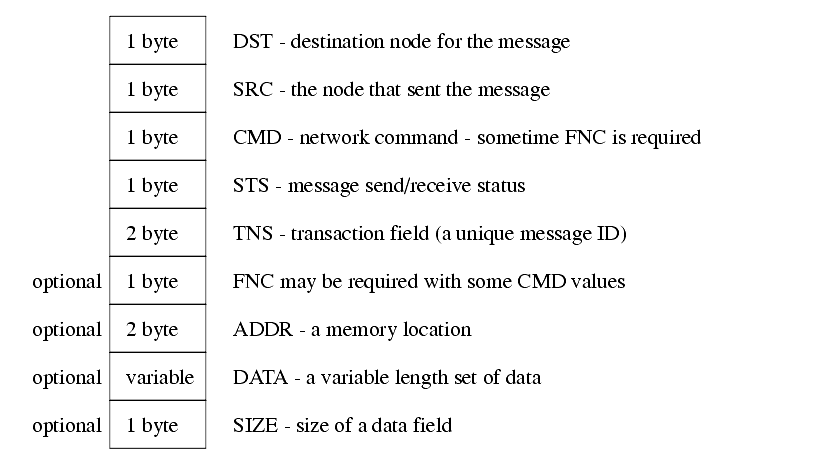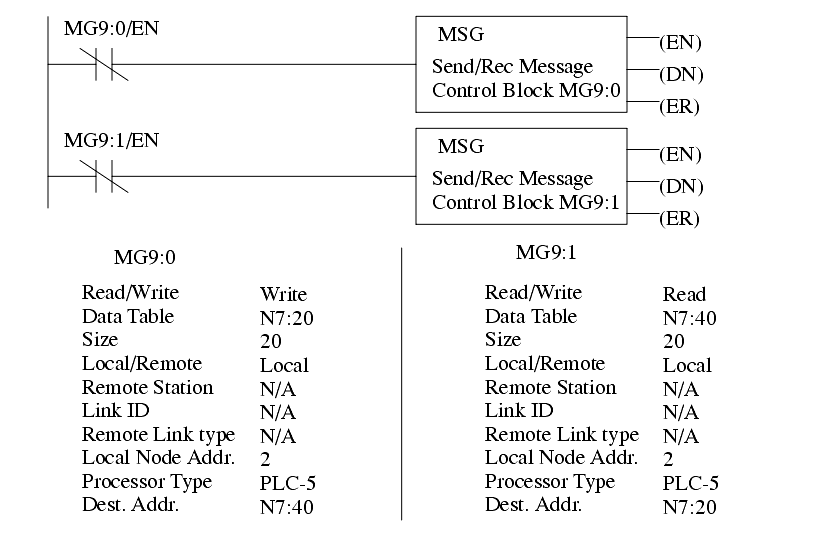
|
|
|
28.3 PROPRIETARY NETWORKS
������������28.3.1 Data Highway
������������Allen-Bradley has developed the Data Highway II (DH+) network for passing data and programs between PLCs and to computers. This bus network allows up to 64 PLCs to be connected with a single twisted pair in a shielded cable. Token passing is used to control traffic on the network. Computers can also be connected to the DH+ network, with a network card to download programs and monitor the PLC. The network will support data rates of 57.6Kbps and 230 Kbps
The DH+ basic data frame is shown in Figure 431. The frame is byte oriented. The first byte is the DLE or delimiter byte, which is always $10. When this byte is received the PLC will interpret the next byte as a command. The SOH identifies the message as a DH+ message. The next byte indicates the destination station - each node one the network must have a unique number. This is followed by the DLE and STX bytes that identify the start of the data. The data follows, and its' length is determined by the command type - this will be discussed later. This is then followed by a DLE and ETX pair that mark the end of the message. The last byte transmitted is a checksum to determine the correctness of the message.

The general structure for the data is shown in Figure 432. This packet will change for different commands. The first two bytes indicate the destination, DST, and source, SRC, for the message. The next byte is the command, CMD, which will determine the action to be taken. Sometimes, the function, FNC, will be needed to modify the command. The transaction, TNS, field is a unique message identifier. The two address, ADDR, bytes identify a target memory location. The DATA fields contain the information to be passed. Finally, the SIZE of the data field is transmitted.

Examples of commands are shown in Figure 433. These focus on moving memory and status information between the PLC, and remote programming software, and other PLCs. More details can be found in the Allen-Bradley DH+ manuals.

The ladder logic in Figure 434 can be used to copy data from the memory of one PLC to another. Unlike other networking schemes, there are no login procedures. In this example the first MSG instruction will write the message from the local memory N7:20 - N7:39 to the remote PLC-5 (node 2) into its memory from N7:40 to N7:59. The second MSG instruction will copy the memory from the remote PLC-5 memory N7:40 to N7:59 to the remote PLC-5 memory N7:20 to N7:39. This transfer will require many scans of ladder logic, so the EN bits will prevent a read or write instruction from restarting until the previous MSG instruction is complete.

The DH+ data packets can be transmitted over other data links, including ethernet and RS-232.
Search for More: |

Custom Search
|

|